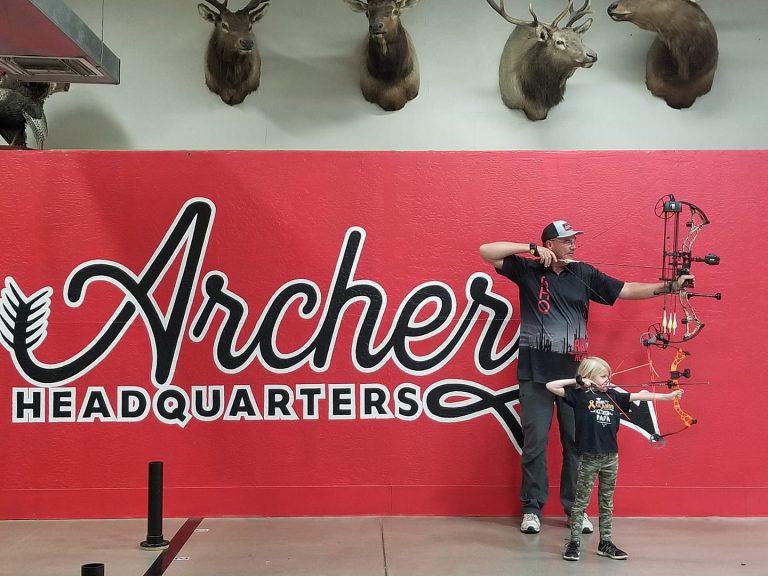BusinessMarketing
ATA Business School: Profit Margins 101 (Part 2)
Understand profit margins to protect and preserve your business.
Photo Credit: Archery Headquarters
In Part 1, we defined profit margin and explained several problems retailers make when calculating margins and profits. In Part 2, you’ll learn how to improve your margins and business by using several tips and insights from Randy Phillips, owner of Archery Headquarters in Chandler, Arizona.

Calculate your profit margins when you're buying products at the ATA Trade Show. Photo Credit: ATA
It’s normal for products to have different margins. Some margins, after all, are influenced by a manufacturer, and based on its minimum advertised price policy or the manufacturer’s suggested retail price. Phillips said most profit margins on bows are 27%, but most profit margins on bow accessories are 40%.
When you buy an item at the ATA Trade Show, the manufacturer gives you a product price, as well as the product’s MAP price. You can calculate the profit margin using the formulas in Part 1 or by using a profit-margin calculator, which is free online or in an app store. Once you know the product’s profit margin, you can buy or pass on the product. If you really like the product but its margin is small, you can increase the margin in one of two ways, Phillips said. One, get a cheaper price on the product. Or two, add a service to the product to increase its price. Each concept is explained below.
To get a cheaper price on a favorite product, retailers can buy in bulk, negotiate prices, buy directly from the manufacturer, or join a buyers group to receive the manufacturers’ best wholesale prices
Attach a service to the product to increase your price and add value to your customer’s purchase. Phillips and his team, for example, fletch arrows sold at Archery Headquarters to put a special helical on them. That slight twist to the fletching helps AH’s arrows fly better than factory- or standard-fletched arrows sold online. Phillips also charges more for stabilizers because he uses a machine to help customers pick the stabilizer that best balances their bow.

Start offering lessons as another source of income. Advertise existing programs. Photo Credit: Archery Headquarters
It’s important to learn how profit margins work and understand their role in your business’s overall health. Phillips said it took him three years to realize no lesson or bow line could make his business profitable, no matter how well he taught or how good the bow’s reputation. Instead, he studied each facet of his business and trimmed each lineup to maximize his profits. Use these profit-margin tips to boost your profits:
— Analyze your business: “The fastest way to make money is not to spend it,” Phillips said. Analyze your business to learn how to operate more efficiently. Every time the shop’s heater or air-conditioner kicks on, it eats into your margins. Cut unnecessary costs to eliminate overhead expenses that eat into your margins.
— Learn how to sell products: Selling more products (if your margins are solid) helps increase your overall profits. To sell more, you must know how to read and understand customers. Click here to learn more. Also read the ATA article “Don’t Just Stock Products, Sell Them” for tips.
— Change your mindset: Phillips said retailers must think about profit margins whenever buying products, and never buy before calculating those margins. He uses his margins calculator when visiting booths at the ATA Trade Show.
— Make product sacrifices: Phillips only buys, sells and promotes products with good margins. “I’ve been excited about products, but opted not to buy them because there was no way I could make money off them,” he said.
— Charge for services: Phillips said a shop’s services — lessons, classes, repairs and maintenance work — are the most valuable part of a profit margin’s equation. “People think they have to give away service to get business, but the truth is you can’t buy service on Amazon,” he said. “It’s unique to you, and you have to place high value on that.”
You must charge people for services they use. Those charges help offset low margins on other products. “It’s a balancing act,” Phillips said.
— Get help: Profit-margin miscalculations can crumble a business. If you lack the experience or know-how to keep your business profitable, get help. Hire a professional accountant or an experienced consultant. These pros can help you avoid math errors and financial chaos. You can also take a profit-margin course in person so you can ask questions and discuss specific examples with the instructor.
Questions? Contact Kurt Smith, ATA’s director of industry relations, at (717) 478-5919, or kurtsmith@archerytrade.org.
To learn more ways to boost profit margins, explore the MyATA Learning Center’s classes. Please log into your MyATA member dashboard and click “MyATA Learning Center” to start.

WE ARE HERE TO HELP THE INDUSTRY, TO HELP INDIVIDUAL BUSINESSES GET THE MOST OUT OF THE INDUSTRY, AND TO HELP YOU.